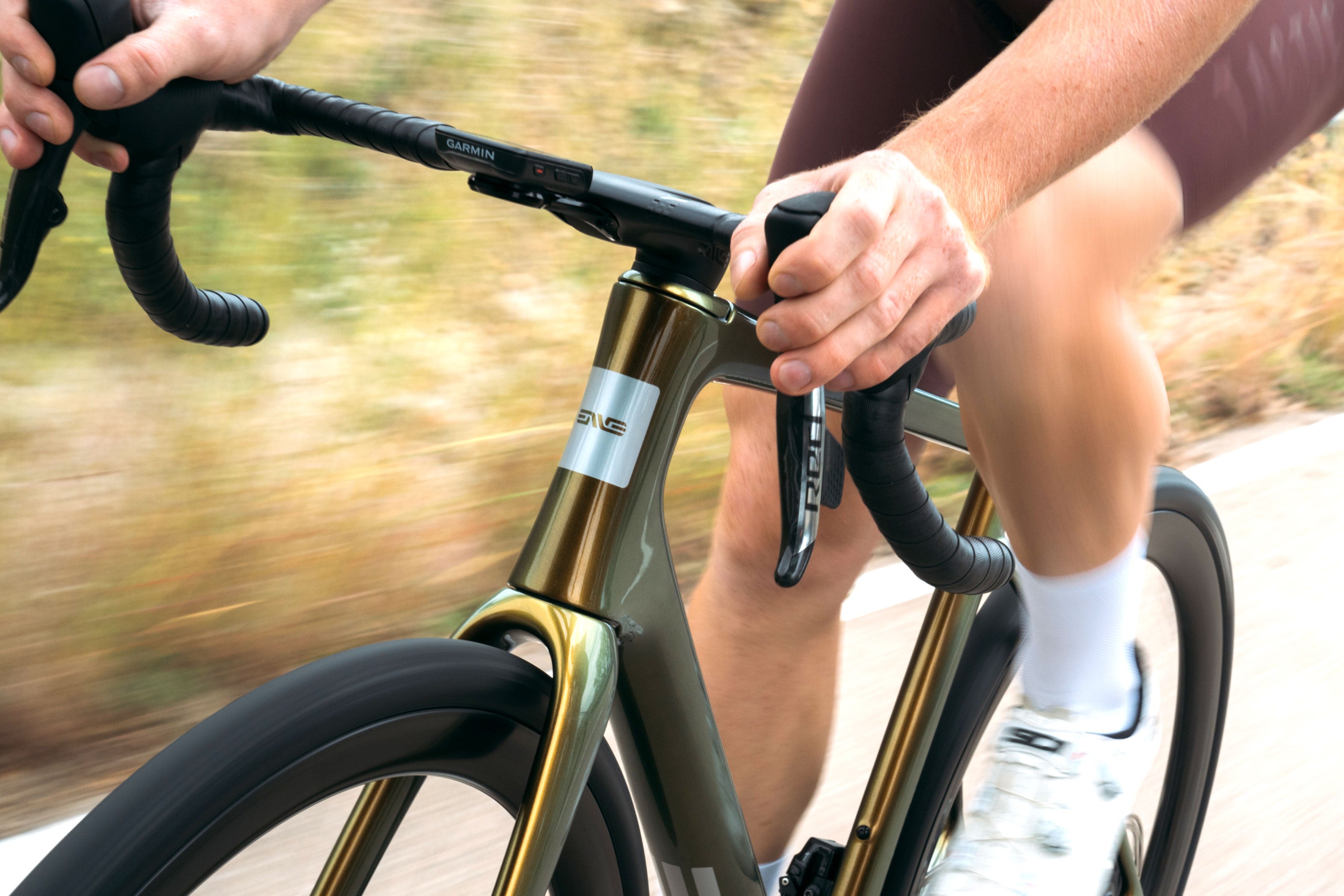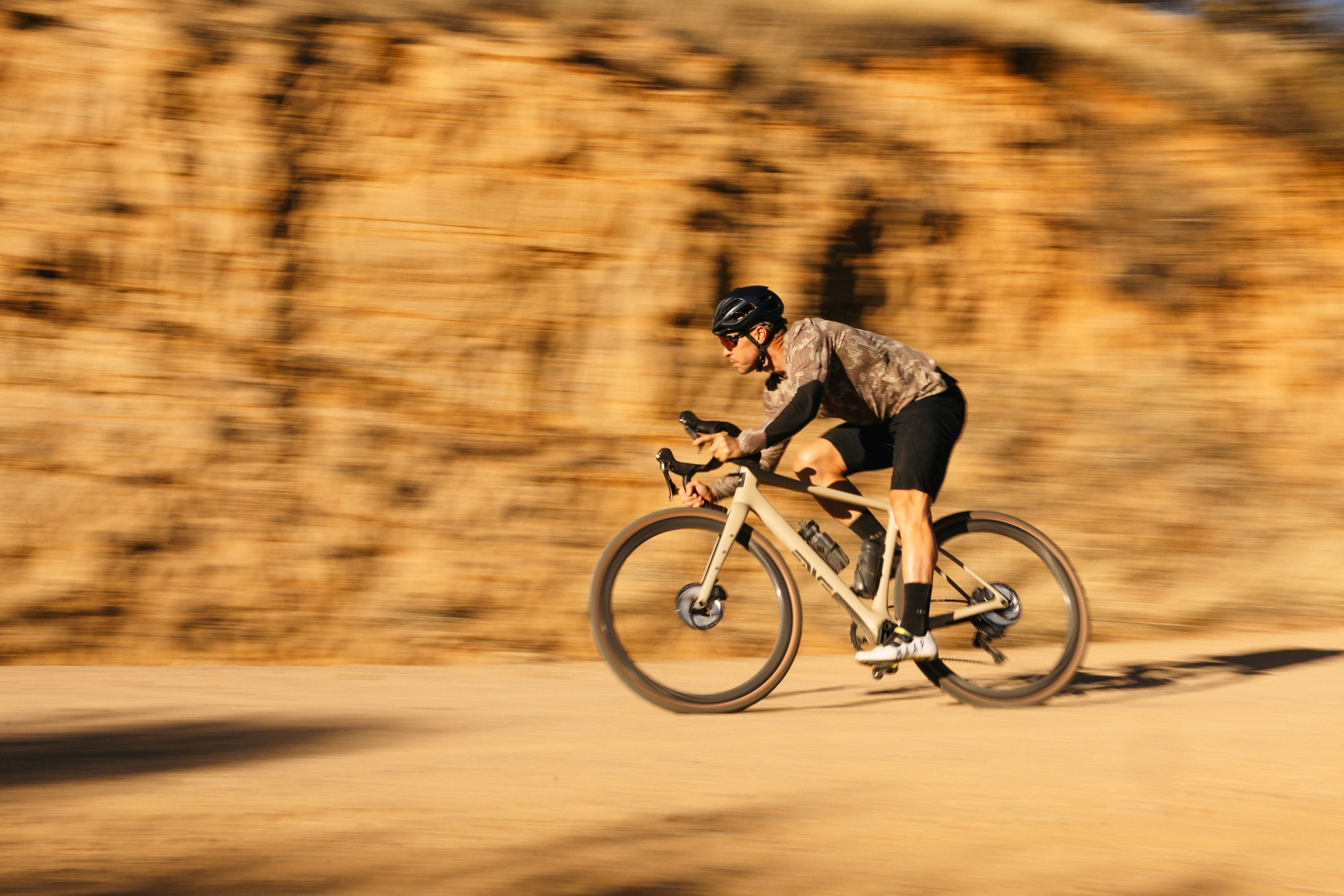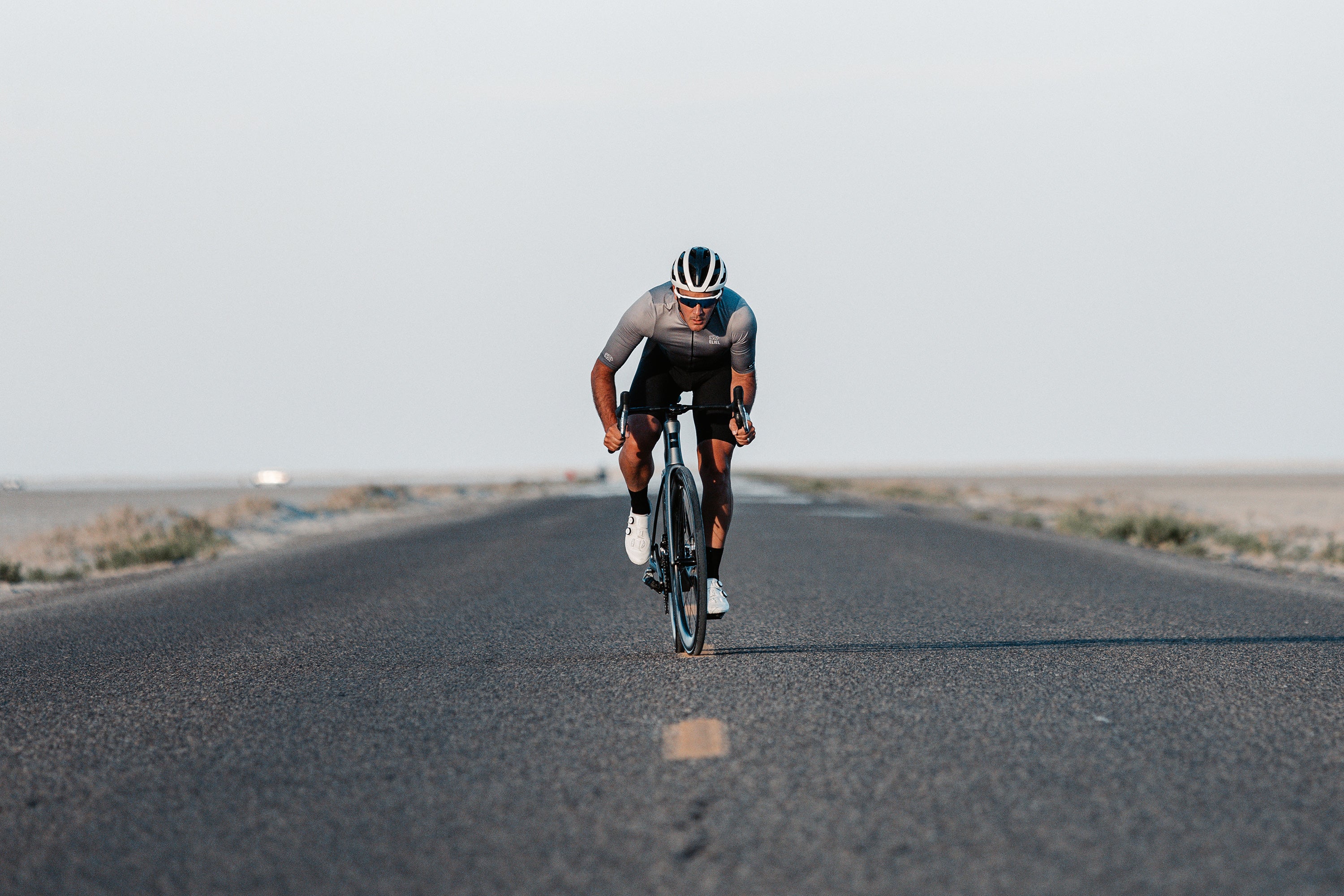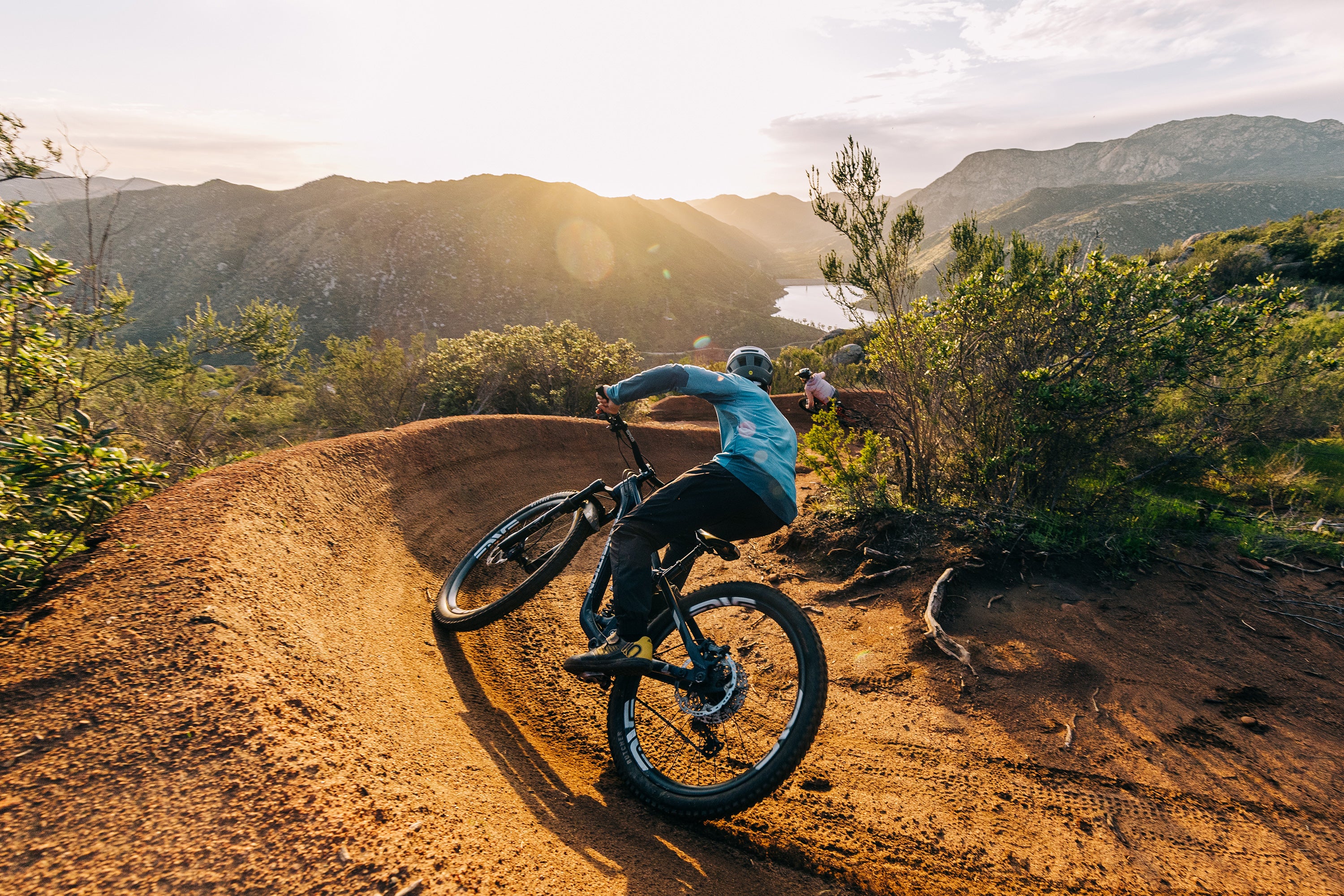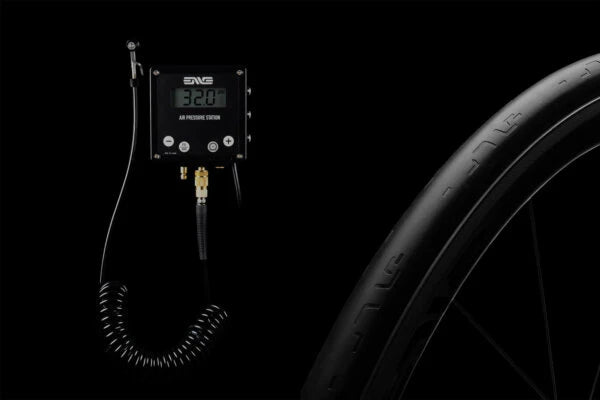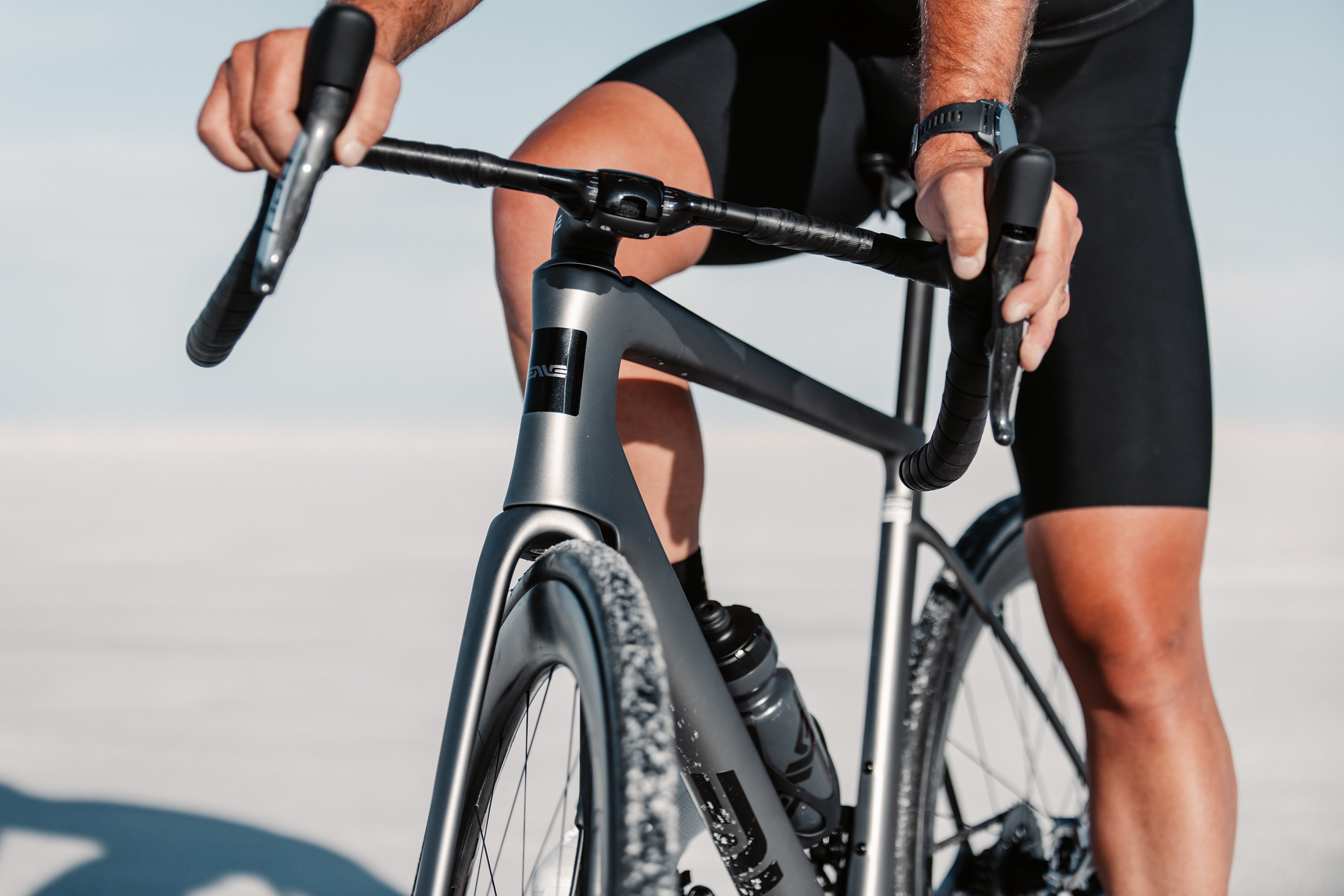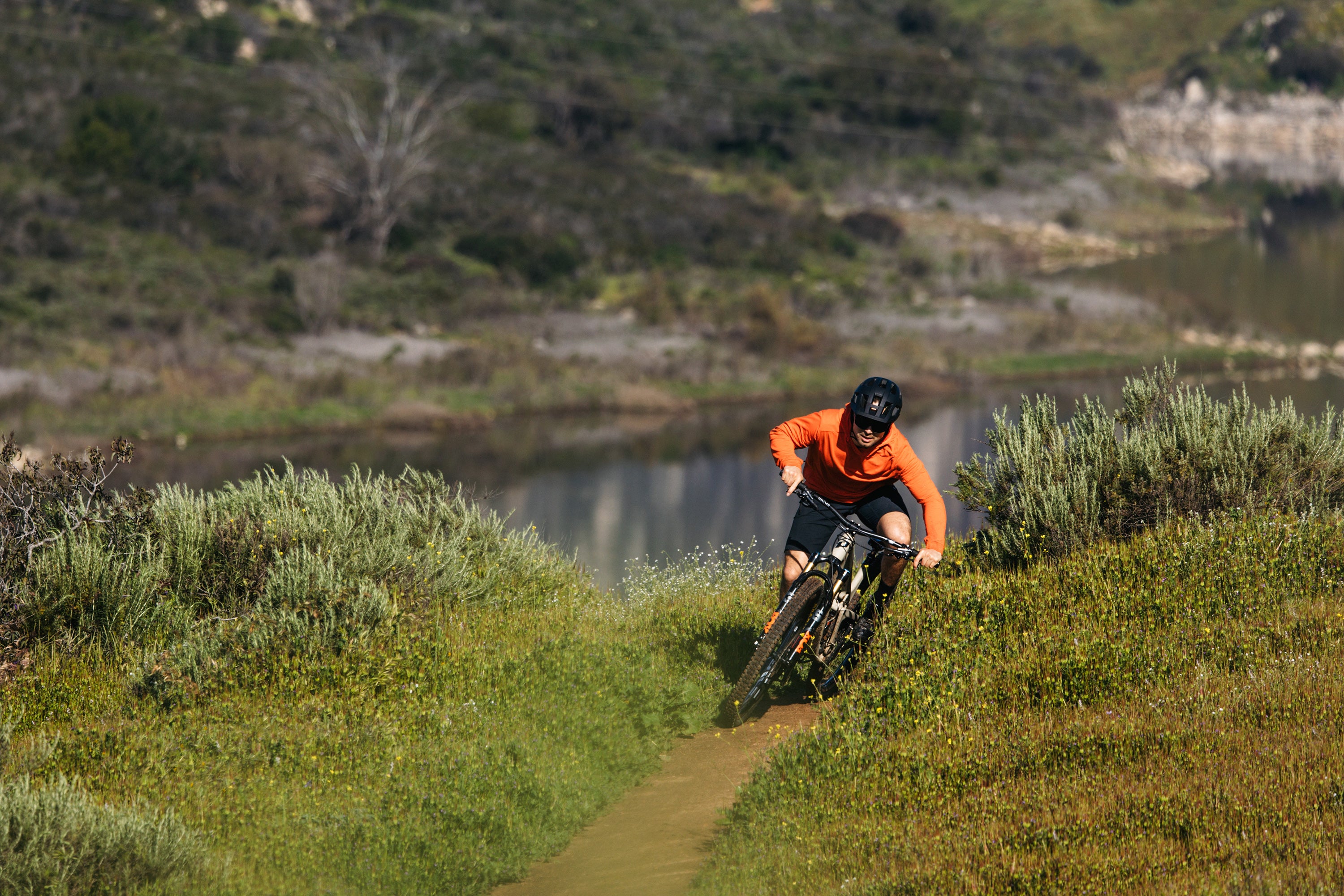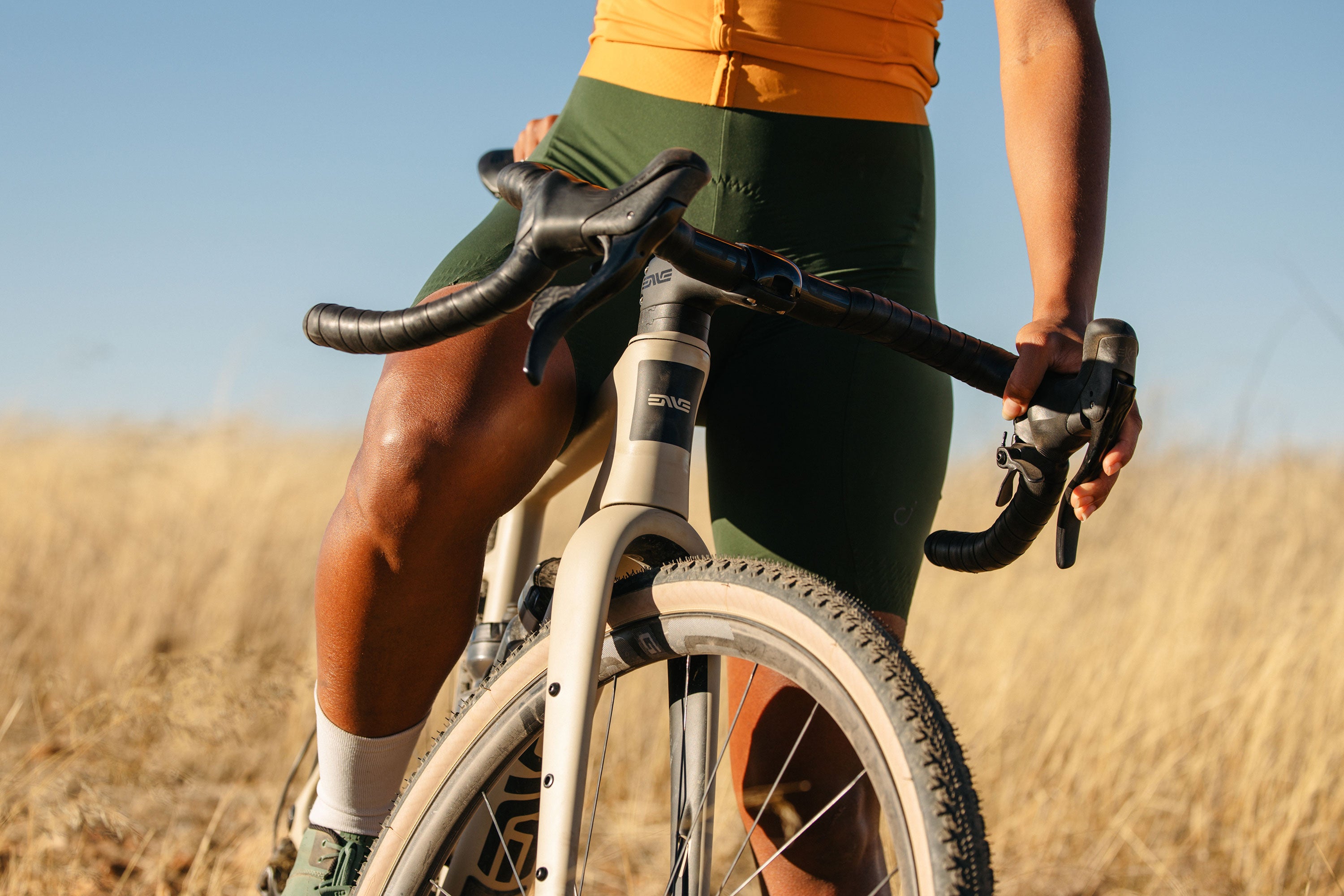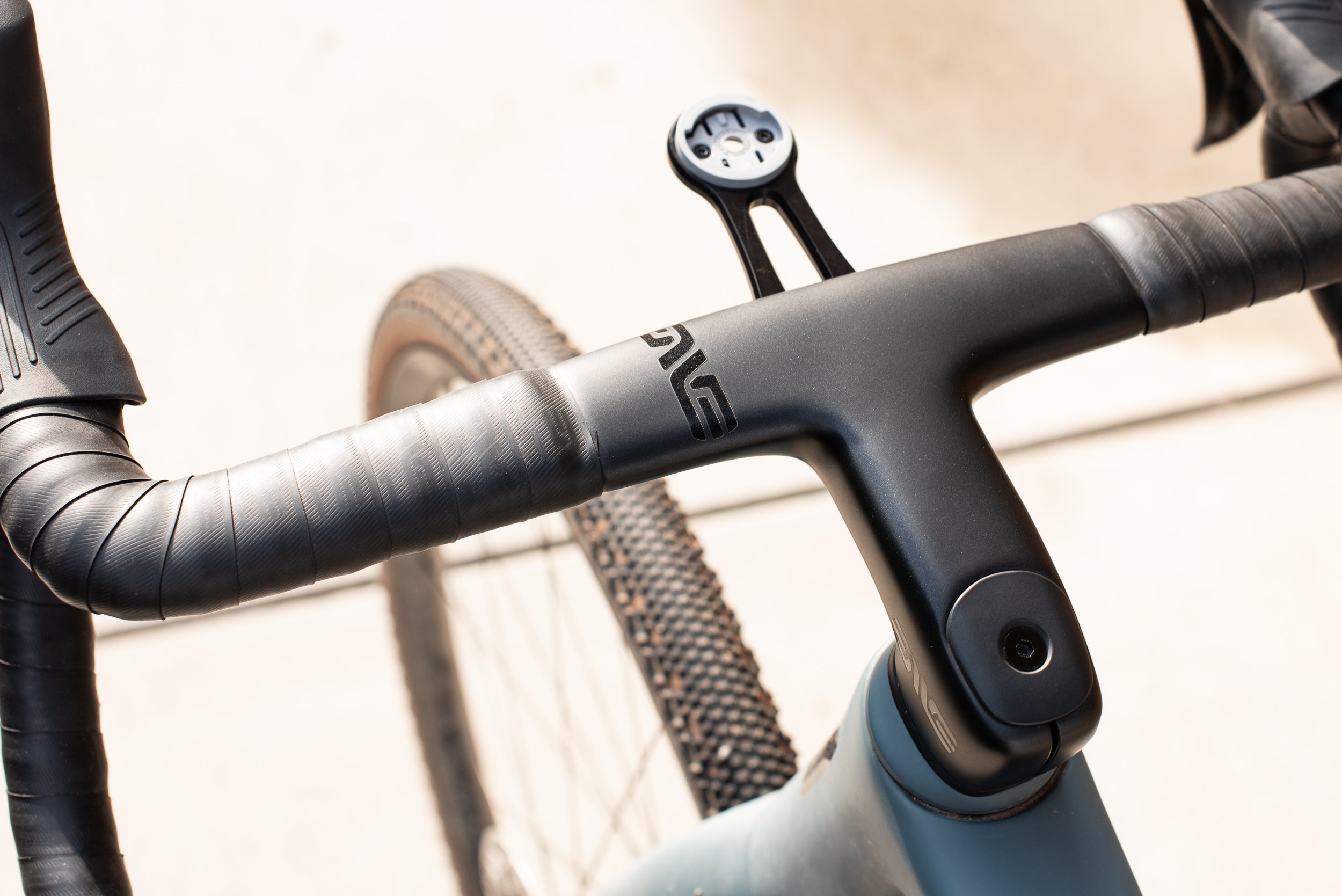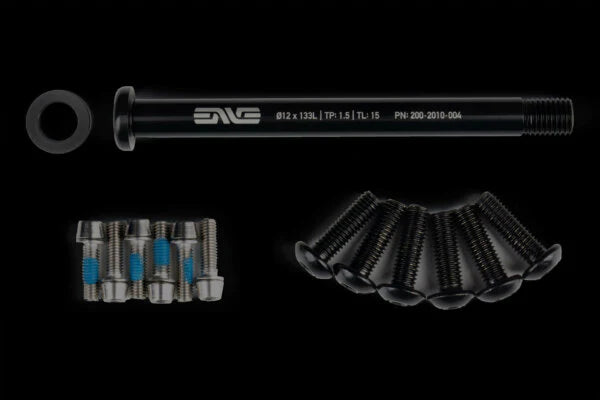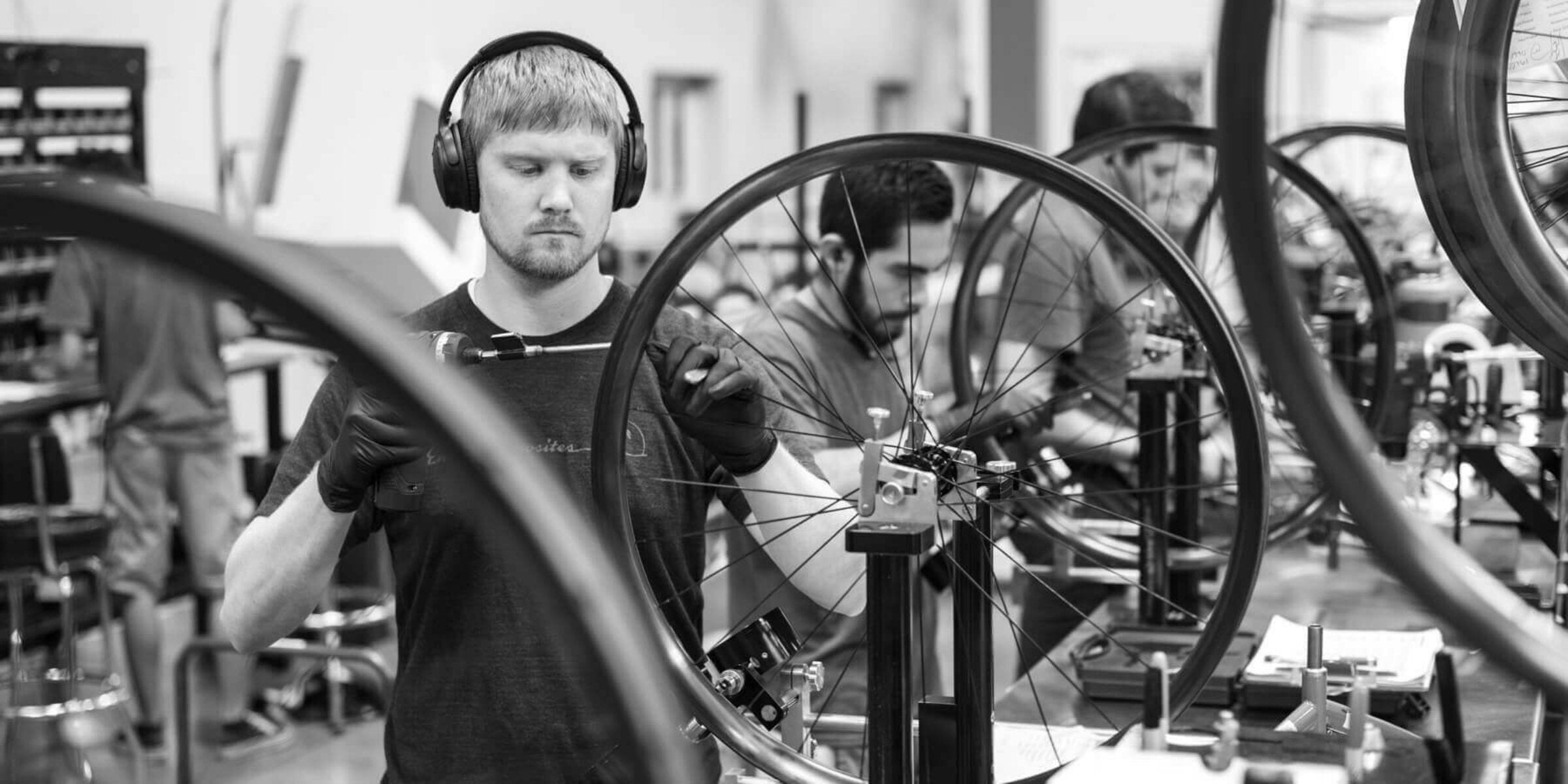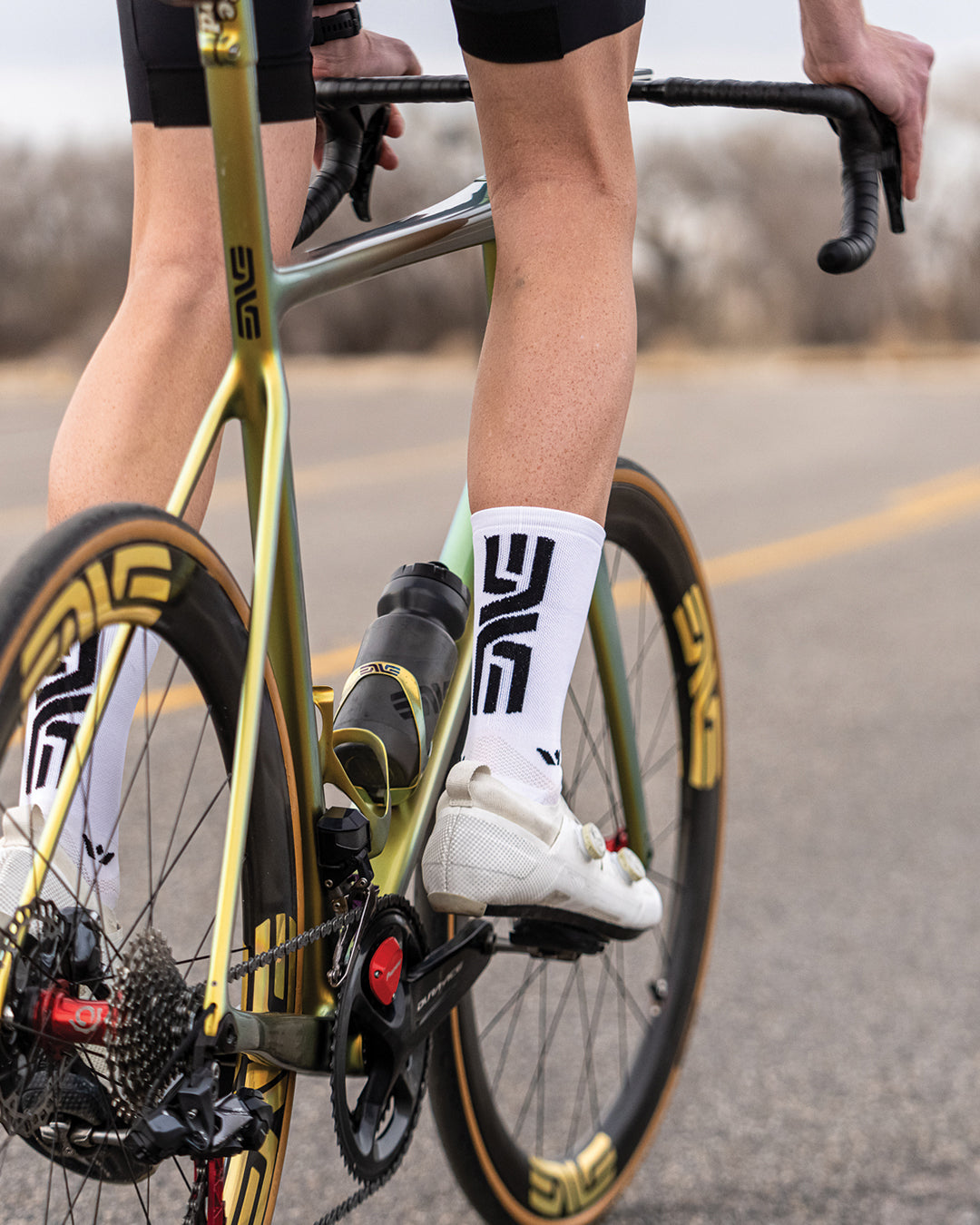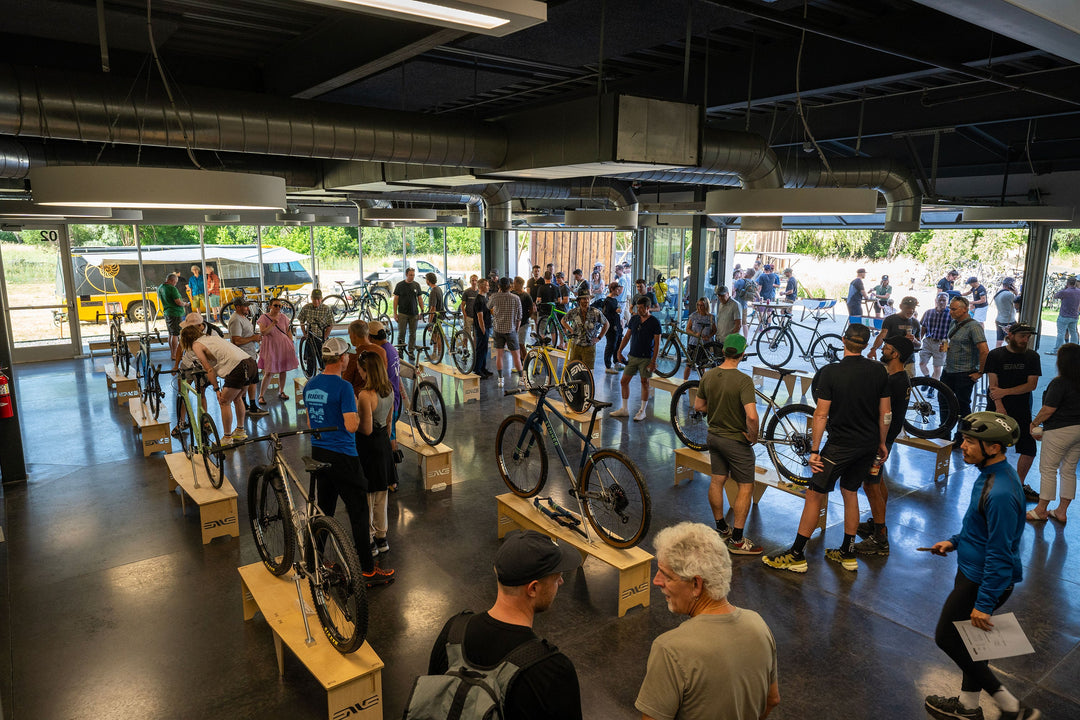Hookless Rim Technology 101

With the recent attention around hookless rim technology in pro racing, we wanted to provide additional insight on some of the more widely circulated questions regarding the testing and compatibility of the system. The subject of hookless road rims is important to us considering it’s a technology we introduced in 2016 with the SES 4.5 AR, and is used by UAE Team Emirates, Team TotalEnergies, Polti-Kometa, and numerous other professional athletes.
With every ENVE product, safety is first and foremost. In the eight years since introducing our first hookless road wheels, we’ve performed over 1,000 tests with tubeless tires to ensure our customers have the information needed to select proper tire pairings. Over the years, we’ve gone from having a small percentage of the tubeless tires on the market pass our rigorous testing process, to now having the vast majority of tires pass.
At ENVE, we firmly believe in the benefits to the user that a hookless rim design allows us to provide. These benefits are not only limited to performance, but also rim strength and bead seat diameter consistency, which makes for a safer tubeless rim/tire interface.
HOOKLESS QUESTIONS ANSWERED
How does a tubeless tire stay on without a hooked-bead?
It is understandable why so many riders see the hooked-bead as the mechanism that creates an airtight seal and ensures tubeless tire retention. The truth is that the hooked-bead was developed to solve a problem in a tubed/lightweight tire with Kevlar bead era. When tires were super-light, the tire’s beads were also very light and quite elastic. In this system, the inner-tube is inflated and the tire expands until the hooked-bead catches the tire’s bead.
In a tubeless system, the tire’s beads (if manufactured and designed correctly) are quite stiff and intended to seal on the surface of the rim identified as the bead seat. The rim’s bead seat is the flat shelf with a bump that is at the base of the rim’s inner sidewall. That loud “pop” you hear when you install a tubeless tire is the tire’s bead being forced by the air pressure over the bead locks and onto the rim’s bead seat. It is on this surface where the tubeless and airtight seal is established. In a correctly designed tubeless system, the tire’s bead should never lift off of the rim’s bead seat. Therefore, the need for a hooked bead is unnecessary.

Why is the ISO tire pressure test only 110% of the max tire pressure? That seems too low and within the margin of error for a floor pump gauge.
Those who question the safety of hookless often cite an ISO 4210 test for tire blow-off that states that a tire must hold 110% of the maximum tire pressure (that pressure being 5bar/72.5psi in the case of a 28mm tire being used on a TSS “tubeless straight-side rim”) for a total of five minutes. While this is the “standard” as defined by ISO, it is widely known to be an inadequate test. ENVE has been qualifying tubeless and tubeless ready road tires for tubeless and therefore hookless (aka TSS) compatibility since 2016. For example, for a 28mm tire to be listed as “Approved/Recommended” on ENVE’s Tire Compatibility Chart, the tire in question must achieve 120 psi or 165% of the stated ETRTO/ISO max pressure of 5 bar/72.5 psi.
As a matter of performance, ENVE recommends riders reference our tire pressure calculator and invest in a good pump and/or pressure gauge to ensure you are riding your most efficient pressure consistently.
The recommended tire pressures for high volume rims and tires are artificially low in order to prevent tire blow-off on hookless rims, rather than where they should be for a higher performing system.
Brands who communicate tire pressure are doing so to assist riders of their products to achieve optimal tire pressures for rolling efficiency. The advent of high-volume road tires is the result of data showing rolling resistance benefits of those tires on the imperfect surfaces we ride on the open road. Larger tire volume means lower tire pressures, and more efficiency.
Don’t believe us? Ask our professional road racers whose livelihoods and results depend on it. Our UAE Team Emirates, Team TotalEnergies, and Polti-Kometa riders typically ride pressures between 52-65 psi/ 3.4-4.5 bar in a 28-30mm tire.

If someone hits a rock or hole so hard that the rim breaks the tire has the potential of coming off.
True. However, it’s also true for any rim design be it a tubed clincher, tubeless with hooks, tubeless with hookless, or a tubular. If the rim’s bead seat dimension is altered or changes due to damage incurred from an impact, crash, or otherwise, the tire is unlikely to stay on the rim. However, if the tire is properly sealing on the rim’s bead seat, it is more likely to stay in place when compared to a tire that is reliant upon a hooked-bead for retention. The bead locks and soft pressfit of the tubeless system aid in tire retention as long as the rim doesn’t break through its bead seat.
Hookless rims have no benefit to the consumer, only to the manufacturer.
Hookless rims have benefits for both the consumer and the manufacturer. For the manufacturer attempting to follow the strict tubeless rim dimensions as outlined by the ETRTO (European Tyre and Rim Technical Organisation) for a tubeless road rim, the hookless design allows ENVE to use precision machined molds to create a precise tubeless rim dimension. To manufacture a hooked-bead, you must use soft materials or dynamic tooling that can be extracted from between the resultant hooks. This can result in less consistency of the rim’s critical tubeless bead seat dimension. A precise dimension at the rim’s bead seat delivers a more user-friendly and safer tubeless experience to the end user.
In addition, the interface between a hookless rim and tire delivers better rolling resistance because you eliminate the friction point between the hook and tire, and allow the tire to sit more naturally on the rim. The elimination of the hook also improves aerodynamics by creating a more seamless interface between the tire and the rim’s sidewall. Finally, ENVE’s hookless rims are tougher and feature ENVE’s Wide Hookless Bead which further ensures reliability of the tubeless tire system by reducing the likelihood of a pinch flat.
Are hookless rims more aero?
ENVE’s aero strategy is to let science and testing guide the design. What we found is that by removing the hooked bead, the tire has a more efficient interface with the rim and this reduces drag. This is not to say that you cannot design an equally fast rim shape with hooks, but we are looking at the holistic performance of the wheel system. Rolling resistance, stability, flat prevention, weight savings, and aerodynamic drag. Our rim design and its hookless beads deliver the fastest solution available.

ISO/ETRTO recommends a 29c minimum tire size with 25mm internal rim width, but ENVE says their 27c tire is approved for use on the same rim. Who do I trust?
ENVE generally supports the ISO/ETRTO recommendation for specific tire volume and inner rim width pairings. ENVE’s 29c tire provides the best balance of aerodynamics, crosswind stability, rolling resistance, traction, and comfort on ENVE’s 25mm internal rim models. The 27c maximizes aerodynamic drag reduction, but crosswind stability, and rolling resistance are diminished. Whether choosing the 27c or 29c tire for pairing on ENVE’s 25mm internal SES models, these tires have been designed and tested for this rim width. Both tire sizes, and many of our competitor’s tires labeled as 28c that are listed as “approved/recommended” on ENVE’s Tire Compatibility Chart achieve a minimum of 165% of the ETRTO’s max pressure rating of 72.5psi/5bar.
ENVE’s hookless road rims state max pressures in the rim channel that exceed the ETRTO stated max pressure of either 72.5psi/5bar for 25-29mm tires or 65psi/4.5bar for 30-34mm tires. What gives?
ENVE has been testing and establishing a “Maximum Tire Pressure” for its rims since we started making rims back in 2007. The maximum tire pressure communicated in the rim channel of an ENVE rim was established as the result of our testing protocol and predates the guidance from ETRTO. In time, ENVE will update its rims to communicate alignment with the ETRTO’s guidance but it will take some time to make the transition. What you can rest assured knowing is that ENVE’s rims are designed and engineered to far exceed the pressures you will ever need to run in your wheelset to achieve optimal performance. Always refer to ENVE’s tire pressure calculator for guidance on finding your ideal tire pressure for a given tire and rim combination.
ENVE’s mission is to create a better ride experience with innovative products that are high-performance, reliable, and confidence inspiring. We believe in tubeless, and explicitly trust this technology because we’ve thoroughly tested it and understand it. We at ENVE want you to ride with complete confidence as well. We understand that while tubeless may not be new to us, it may be to you, so we are here to help you along your journey.
Have more questions? Don’t hesitate to let us know.


